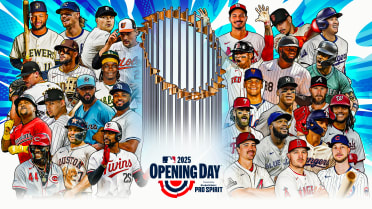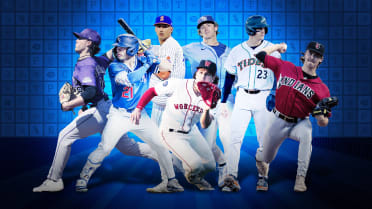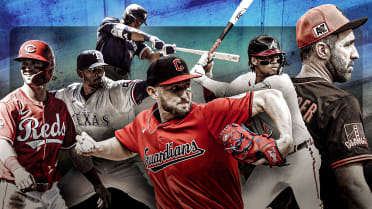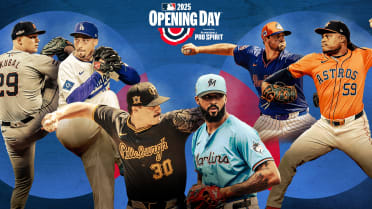NEW YORK -- In the hours before their series opener against the Giants on Tuesday, the Mets’ Trade Deadline vision became a reality. Francisco Lindor took ground balls at shortstop. His childhood friend and World Baseball Classic teammate, Javier Báez, did so at second base.
The two are now ready to become one of the league’s most dynamic double-play duos -- at least for the final month-plus of the season.
Five and a half weeks after Lindor landed on the injured list due to a strained right oblique, the Mets officially activated him on Tuesday evening, optioning infielder Travis Blankenhorn to Triple-A Syracuse. Lindor returned to the lineup starting at shortstop and batted third, while Báez played second base and hit cleanup.
“The energy is going to be sky-high, I think, with those two in there just talking the whole game, moving guys around, and then just keeping everybody on their toes,” manager Luis Rojas said. “They’re very active. They’re very proactive. Both of those IQs are high for the game.”
Before landing on the IL, Lindor was batting .228/.326/.376 with 11 homers in 87 games, but those numbers -- following a deep early-season slump -- included a .274/.363/.484 slash line with eight homers over his most recent 45 games.
“It’s huge that we’re having him back, right?” Rojas said. “Having his presence on the field is something that we missed for over a month now -- his energy, his bat, his defense, everything he brings to help the team win games. It’s been hard to be out there without his presence. I know a lot of guys are better because he’s there.”
As for Lindor’s connection with Báez, the two met as children in Puerto Rico, playing together throughout their youth before reuniting as teammates at the 2017 World Baseball Classic. The two were eager to reconnect again once the Mets acquired Báez, an impending free agent, in a July 30 trade with the Cubs.
“For sure, I’m really excited about being out there with him,” Báez said this weekend. “He’s really excited to come back, and he can’t wait to come back.”
Next stop: Minor Leagues
Assuming all goes well in the aftermath of Noah Syndergaard’s “touch-and-feel” bullpen session on Tuesday, the Mets plan to send him on a Minor League rehab assignment later this week. It will be Syndergaard’s first game action since he departed his last rehab assignment on May 25 due to right elbow soreness.
Following that outing, Syndergaard refrained from throwing for several weeks before more recently working his arm back into shape. He threw multiple live batting-practice sessions on the Mets’ West Coast trip, topping out at 95 mph while facing teammates Lindor and Luis Guillorme on Saturday.
Syndergaard’s health may no longer be in question 17 months removed from Tommy John surgery, but his role is. Mets officials plan to meet this week to discuss the rehab plan for Syndergaard, who is near-certain to return to the pitching staff in a relief role. That could take multiple forms, including a one-inning bullpen job or a multi-inning gig.
What the Mets decide will affect the nature and length of Syndergaard’s rehab assignment.
“We’ll figure out exactly what plan makes the most sense,” acting general manager Zack Scott said.
Back in the tube
Jacob deGrom is scheduled for yet another MRI -- his third in less than a month -- on Wednesday morning. If the imaging comes back clean on deGrom’s inflamed right elbow, which has kept him sidelined since July 7, the Mets intend to have him restart a throwing program at that time.
However, time is running short for deGrom to pitch again this season. Currently on the 60-day injured list, deGrom is ineligible to return until Sept. 13 at the earliest. Even if he is cleared to begin throwing on Wednesday, deGrom will need multiple flat-ground and bullpen sessions before beginning a Minor League rehab assignment -- a process that will take several weeks. At most, deGrom could conceivably give the Mets a start or two down the stretch.
Even so, Scott said any thought of the Mets shutting down deGrom for the year would be premature, in light of the fact that his MRIs have routinely shown no structural damage.
“I would agree that it’s late in the calendar, but I don’t agree that it’s necessarily a shutdown,” Scott said. “You shut down a guy because there’s real physical reasons to do that. That may present itself as we start a ramp-up. But whether he pitches in a big league game or not, I think it’s important for us to know where he’s at.”
Senior Reporter Anthony DiComo has covered the Mets for MLB.com since 2007.




